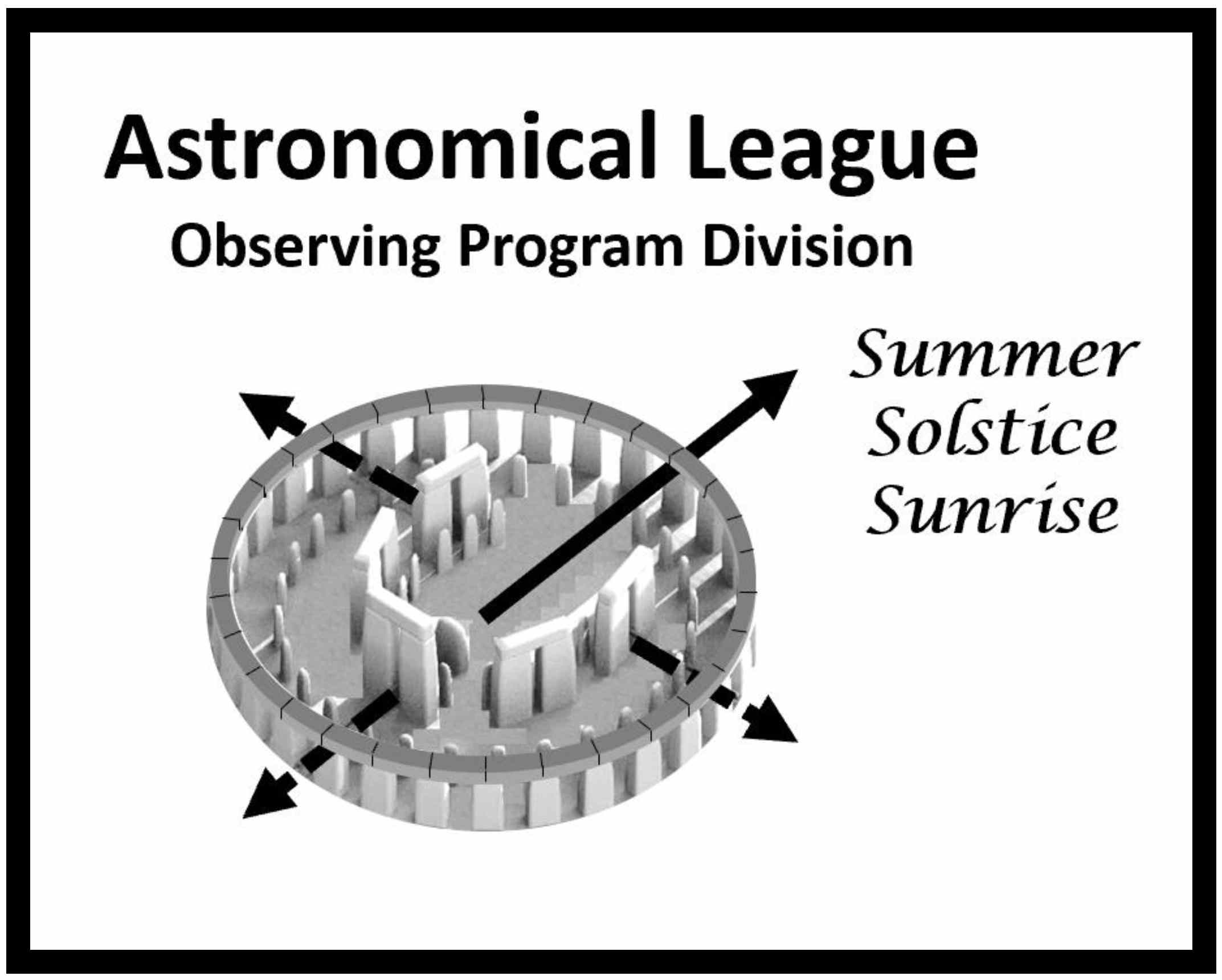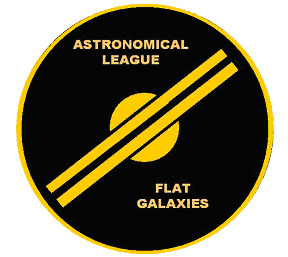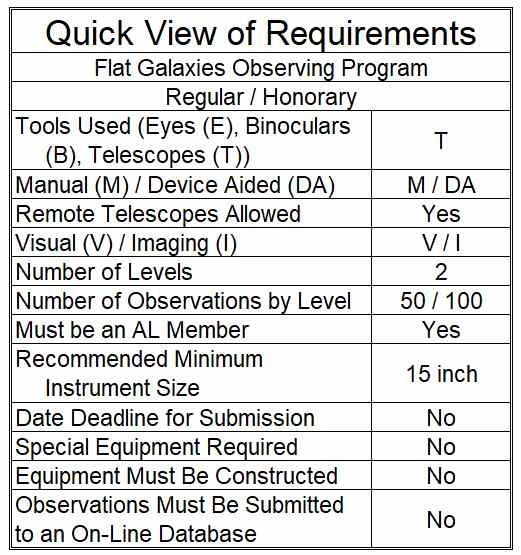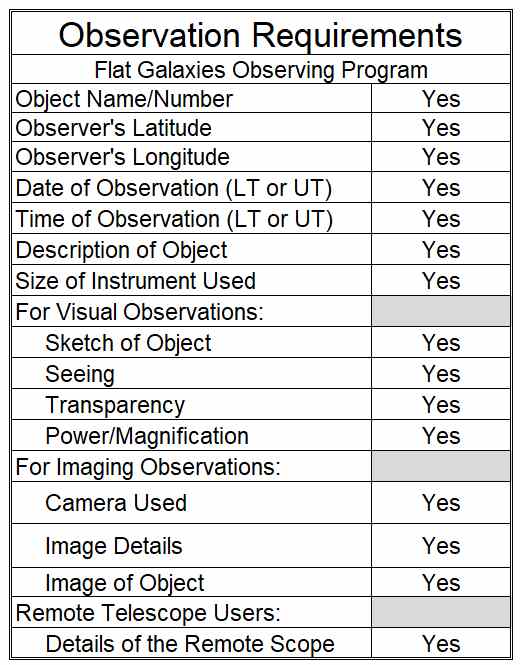Flat Galaxies Observing Program Coordinator:Lauren Rogers |
  |
IntroductionDetection of shape and form in galaxies is a visual challenge. As a general class of galaxies, edge-on galaxies are a pleasant yet demanding change of pace. A subclass of edge-on galaxies are flat galaxies which are defined as having a diameter larger than 40 arc-seconds and a major-to-minor axis ratio of >= 71. This unique brand of galaxies is used as a tool for studying large-scale motions and distances. Karachentsev et al1 published the fact that there is a tight correlation between their linear diameter and the width of the 21cm line that can be detected. There are thousands of flat galaxies catalogued1,2 with many of them well beyond the limit of visual observations. The galaxies selected are brighter than 15th magnitude, with the majority well within the range of amateur telescopes. Purpose & Significance:The purpose of this Observing Program is to provide a unique challenge for visual and imaging observers in both the Northern and Southern hemispheres. It is designed to hone the observer’s skills in locating, detecting, observing, and recording observations such as determining the PA (position angle) of flat galaxies. The objective is to provide a venue for the advanced amateur observer to become more familiar with this class of galaxy classification and begin to appreciate the ease or difficulty in detecting them. This Observing Program serves to consolidate as well as bring to light this unusual class of galaxies. |
 |
Requirements and Rules
This certification is available to members of the Astronomical League, either through their local astronomical society or as members at large. If you are not a member and would like to become one, check with your local astronomical society, search for a local society on the Astronomical League Website, or join as a member at large
- Observers will be required to observe any 50 flat galaxies from Appendix A (list is attached) for the Flat Galaxy Observer Silver Level certificate and any 100 flat galaxies from Appendix A for the Gold Level Certificate plus a pin.
- Observations will be telescopic and can be recorded either visually or through imaging.
- The galaxies can be located manually (M) or with device-aided searches. Remote telescopes are allowed.
|
 |
Submitting for CertificationTo receive your certification, you may either submit your completed logs with required information to the Flat Galaxy Observing Program Coordinator or have them reviewed and approved by an officer of your astronomy club. They should contact the Observing Program Coordinator with your information via email. Be sure to include your name, mailing address, email address, phone number, society affiliation, and to whom the award should be sent. |
 |
Upon verification of your submission and of your active membership in the Astronomical League, your recognition (certificate, pin, etc.) will be sent to you or to the awards coordinator for your society, as you specified. Your name will also appear in an upcoming issue of the Reflector magazine and in the Astronomical League’s on-line database. Congratulations. Good luck with your next observing challenge.
Flat Galaxies Observing Program Coordinator:
Lauren Rogers
1477 E. Shores Blvd.
Gulf Breeze, FL 32563
(850) 739-0939
lsrogers16@gmail.com
Notes:
Acknowledgments: We would like to thank the members of the Delaware Valley Amateur Astronomers: John Bajtelsmit, Mark Huss, and Vince Scheetz who assisted in the development of this Observing Program and Dick Steinberg who imaged the flat galaxies used on the certificates.
Links:
Appendices:
- Appendix A: a list of flat galaxies by Right Ascension (Excel Spreadsheet) (pdf)
- Appendix B: a list of flat galaxies by constellation (Excel Spreadsheet) (pdf)
- Appendix C: a list of flat galaxies ‘above -30° Declination’ (Excel spreadsheet) (pdf)
References:
- Flat Galaxy Catalogue, Karachentsev, I.D., Karachentseva, V.E. and Parnovsky, S.L. Astronomische Nachrichten 313: 97-222, 1993.
- The Revised Flat Galaxy Catalogue, Karachentsev, I.D., Karachentseva, V.E., Kudrya, Y.N., Sharina, M.E. and Parnovsky, S.L. Bull. Spec. Astrophys. Obs. 47: 5-185, 1999.



